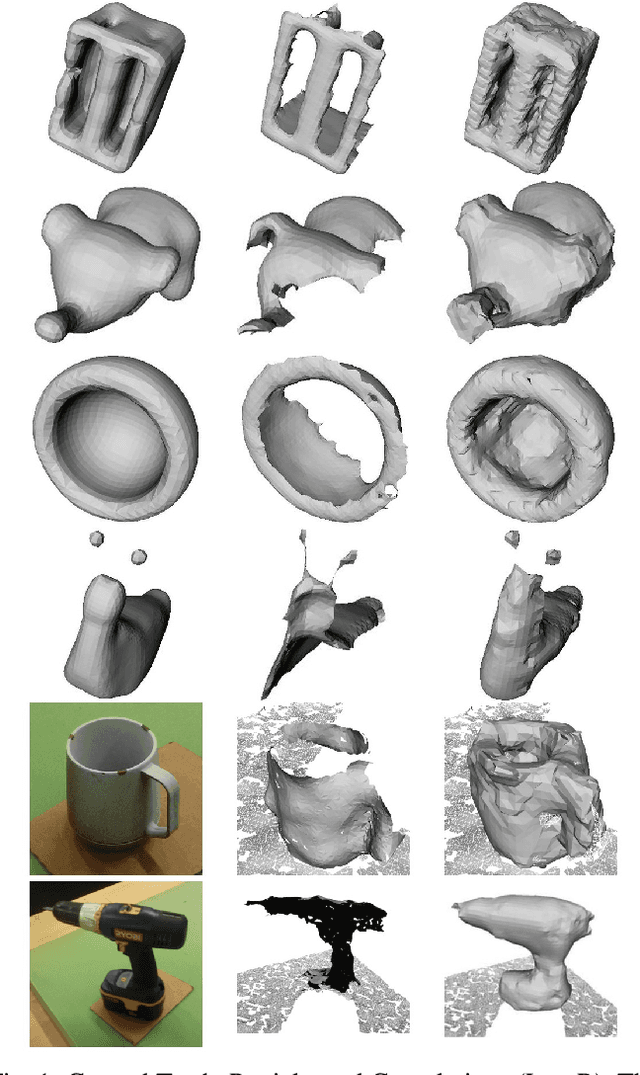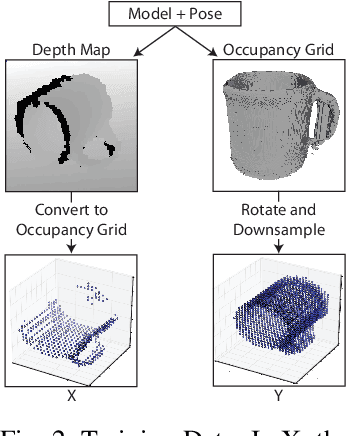Joaquín Ruales
Shape Completion Enabled Robotic Grasping
Mar 02, 2017



Abstract:This work provides an architecture to enable robotic grasp planning via shape completion. Shape completion is accomplished through the use of a 3D convolutional neural network (CNN). The network is trained on our own new open source dataset of over 440,000 3D exemplars captured from varying viewpoints. At runtime, a 2.5D pointcloud captured from a single point of view is fed into the CNN, which fills in the occluded regions of the scene, allowing grasps to be planned and executed on the completed object. Runtime shape completion is very rapid because most of the computational costs of shape completion are borne during offline training. We explore how the quality of completions vary based on several factors. These include whether or not the object being completed existed in the training data and how many object models were used to train the network. We also look at the ability of the network to generalize to novel objects allowing the system to complete previously unseen objects at runtime. Finally, experimentation is done both in simulation and on actual robotic hardware to explore the relationship between completion quality and the utility of the completed mesh model for grasping.
 Add to Chrome
Add to Chrome Add to Firefox
Add to Firefox Add to Edge
Add to Edge